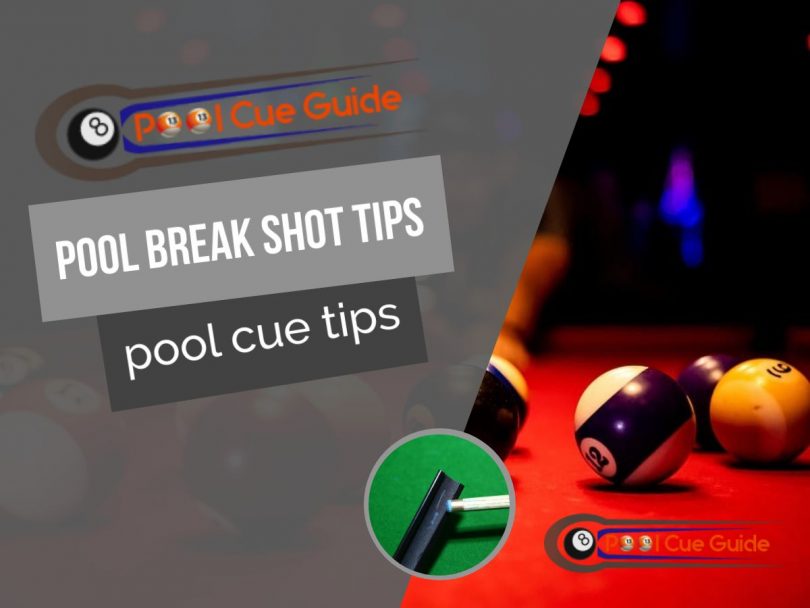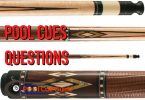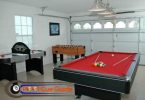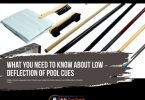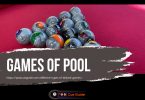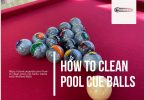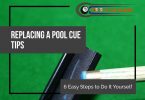In the game of pool, the break occurs at the start of each game but what many do not understand is that it can be the most significant shot of their match. Things are not restricted to owning the most expensive or appropriate material for doing well in a game. If you own the best but have zero technique or strategy understanding, then it is all pointless. There has to be the right balance of both.
Properly hitting a good break shot can be the distinction between victory and loss, so understanding how you can maximize your chances is crucial. Pro players have been generous enough to impart some of their knowledge in how to dominate the key shot, and in this article, we have rounded up all the pro tips and secrets for you. Read on to find out how you can always cement your victory by acing the pool cue break shot.
Content Navigation
- 1 Never Forego Accuracy To Get More Power.
- 2 A Little Flexibility Goes a Long Way
- 3 Check the Sidespin
- 4 Sharp Stance
- 5 Be Wise with Your Spot Choice
- 6 See Where the Expert Players Start
- 7 Understand the 9-Ball Object Routes
- 8 Understanding the 8-Ball’s Path
- 9 Your Match Rules-Understand Them
- 10 Solid Contact
- 11 Go With a Closed Bridge
- 12 Loosen the Bridge Arm
- 13 Minding the Bridge Distance.
- 14 Striking Dead Center
- 15 Dial Back The Backswing.
- 16 Eyes on The Ball
- 17 Weight Transfer upon Contact.
- 18 Practicing Timing
- 19 Keep the Cue Level
- 20 A Strong Follow Through Development
Never Forego Accuracy To Get More Power.
Both accuracy and power are somethings that are intimately related, but you still have to watch out for them. The ultimate rule in break shot is to strike the head ball (which is mostly the 1 ball) with all your might. A precise and dead center strike will shift all of the momentum of the ball in the rack. Johnny Archer, the pool legend, says that it is much like hitting the golf ball, and if you strike one at the center with a hundred and five miles per hour speed, you can go as far as someone hitting a hundred and twenty miles per hour speed at the off-center hit. Therefore, in the pool, you do not need to strike too hard to get the movement.
The best way to enhance your break is with your devoted break cue. Break cues have tougher shafts and harsher tips that are constructed to bring out maximum power transference and to boost your odds of making balls on your break shot.
A Little Flexibility Goes a Long Way
No matter the strategies, the only solid break shot is the one that ends with the ball sinking, so you have to be willing and open to adjusting your strategy and being flexible. A rigid attitude wins nothing, and in sports like pool, you must be open to adjustments. This implies switching up your cue ball positioning, chasing your speed, or even toning down on the power when you hit your head ball (if it comes to that).
For instance, some players decline to soft their break out of sheer stubbornness because they think they have to ‘break hard’ but the fact is you have to win. That is the end goal.
Check the Sidespin
It is better to curtail your usage of excessive right hand or left hand English. Your focus should be on keeping your cue ball from scratching, and side English tends to make the cue ball dance around too much. This also results in a wobbly and shaky sink in the pocket, which is not the best practice. Many pros go with side English, but they keep it to a minimum and have years of practice of reigning it.
Sharp Stance
Some professionals believe in narrowing the stance as it helps if you aim to propel your torso and hips forward on your break stroke. Many experts prefer their front foot, and it is a favorable idea to stand upright in a break shot; however, you have to ensure your legs remain bent. This will enable you to generate more momentum. While everybody has their own take on stance, it is better to find out which positions suit your style best and sharpen it.
Be Wise with Your Spot Choice
Every pool table has a different break, but you can still find the sweet spot in a few ways quickly. First, scan the tablecloth for any evident indications of wear. Prior players could have found the excellent cue ball position for the break shot, so you need to find and check any marks for that positioning. Moreover, check the streaks directing towards the foot spot. But if you know your table before time, find out about an earlier match to discern where the players were breaking and what speed is the best working option.
See Where the Expert Players Start
If the rules require breaking right from the box, then it has to be followed, but if there is no restriction, many expert level players begin breaking from a spot a few inches from the right or left rail. Relying on the outcome, they move in a couple of inches, and this usually influences the 1 ball’s path as it flits with the side pocket or the wing balls to a certain degree. Moreover, you can also opt to switch sides or your stroke’s speed.
Understand the 9-Ball Object Routes
You can always check out a map of the inclinations of the object balls on a 9-ball break hit. The integral balls to be mindful of are the head ball (the 1 ball) and the wing balls (ball 7, ball 3) because these are the most reliable ones. Pro players will modify the situation of their cue ball with the headstrong and their break speed until they sink one of both of these balls.
Understanding the 8-Ball’s Path
The 8-ball break remains more complex than the 9-ball one, and so it is hard controlling any object balls with accuracy. However, we will mention that your best bet would be the two balls right after the main head ball that tends to wander towards their respective side pocket.
Your Match Rules-Understand Them
Billiards Digest pro Larry Schwartz proposes utilizing another technique if the rules state you win by pocketing the 8 on the break shot. Often rules can call for spotting the 8 balls. In such circumstances, strike the second billiards ball fully from either the left or right side. Hit your cue ball with a little right English if you plan to break from the left, and utilize the low left if you plan from breaking right.
English assists in keeping from scratching, and this break enable to propel the 8 balls from the stack toward pockets. Although this is a rather high-risk style, the rewards are big but if you do not execute it right, it can often end up in bad spreads and massive clusters, so be careful.
Solid Contact
In 8-ball, it is significant to have a solid strike with the power of the stroke concentrated straight in the head ball and rack. Utilizing this tip, many experts end up breaking within their initial diamond from the center.
Go With a Closed Bridge
No matter if you break from the rail or the middle of the pool table, you have to go with a closed bridge. This will get you extra accuracy on the cue-ball strike, and the closed bridge will enable you to maintain the tip down while your body rises. Experts suggest putting some pressure on the bridge hand, so you do not raise yourself and lean in a little.
Loosen the Bridge Arm
Your bridge arm has to be loosened, and you must keep it relaxed. Also, bend it at a small angle because if you keep it stiff and straight, it will hinder your body while executing the backswing and restrain you from moving into the shot. Such hindrance will massively affect your game, so be careful with these little details.
Minding the Bridge Distance.
Many pros tend to set up a little far away than usual on their break hit – around eight to ten inches. You must take it farther back on your backswing and the follow-through so you can make additional room. The additional distance inevitably enables extra acceleration on the stroke. However, if you bridge from the rail, the distance will be shorter. Nonetheless, be careful because of the more the bridge distance, the less precision on the shot.
Discovering the Exact Backhand Position
Things can get confusing with a constant debate about if you need to reach a few inches back on the pool cue for hitting the break shot to give a long strike or keeping the backhand in its position. However, it is encouraged to experiment and opt for what feels most comfortable to you. Pros like Thorsten Hohmann choke up some inches for the break to get extra control. Moreover, Jeanette Lee chokes up her cue, completely executing her break hit.
Striking Dead Center
It is unanimous: you must hit the cue ball a hair to a complete tip below the center. The purpose is to squat your cue ball in the table’s middle after it strikes the head ball. Any backswing applied by you will instantly dissipate after the contact and leave the cue ball with zero momentum. However, be mindful, many people aim low and their cues tend to creep up on the break hit.
Dial Back The Backswing.
Having break problems is something even pros struggle with. There is multiple techniques players’ use, however, the most prominent is slowing on the backswing. On the last hit, pull your cue back in a subdued way, and then hit forward smoothly. Think of this as yanking back the bow’s string before launching the arrow.
Eyes on The Ball
With two schools of thought on the focus point, while executing the break stroke, some players recommend peeking at the head ball while others say to keep the focus on your cue ball to guarantee an accurate strike. Stevie Moore expressed his struggle with looking at the head ball, so he focuses on the cue ball instead. He also says that he glances back and forth, but his final look remains on the cue ball. Therefore, it is all about personal pretense and what suits you best. Many great players peek at the 1 ball, but it is not easy. You always have to trust the stroke.
Weight Transfer upon Contact.
Most of the top breakers push their torsos and hips forward as they begin their stroke. This usually ends in a kick from their back foot. Their weight pans out on their front foot. You use your legs to lend more speed and acceleration to your arm and stroke. Try focusing on using the back leg to initiate some forward power. This renders your back leg to kick higher naturally. You can think of it like a martial arts move: kicking someone standing right behind you in a fight.
Practicing Timing
It is the crucial ingredient and the most incredible component of a victorious break. You are striving to get various body parts to function together in an activity that happens in the blink of an eye. However, when all is said and done, you must go with what you think works best for you but try to work on your timing to refine things. There is a progression that pros recommend: end your backswing and then pause. Now begin by propelling your torso and hips forward, begin a smooth cue acceleration, hit your cue. Then follow through while your back foot vacates the floor.
Keep the Cue Level
Ideally, at the point where your cue tip meets your cue ball, you need your forearm to be upright, a ninety-degree angle to your cue. Keep your cue level but also check your comfort level. Excessive pitch can render your cue ball to swing off the pool table, and that can instantly ruin your game.
A Strong Follow Through Development
After hitting your cue ball, the cue must keep moving ahead. As the cue is tumbling into the shot at a low angle, the natural course would be for the cue tip to strike the cloth after the point of contact and proceed to slide the pool table. Some pool players like Mike Sigel and Thorsten Hohmann, fully plant the cue sticks while the follow-through ends, and you see the shaft bend after the stroke is done. This bending is not advised as it lays unprecedented stress on the joints and can damage the equipment. Like Francisco Bustamante and Johnny Archer, the people with highly exaggerated follow-through journey past that point until their cues are above and still.
Conclusion
While the precise game of pool offers and accepts no shortcuts, excessive practice and hard work always pay off. With effective tips and pro secrets like above, you can dominate the game in no time by applying these techniques. We hope these tips will help you amp up your game and emerge victoriously and be the envy of your competition. Dramatic modifications in the break can give you additional opportunities to hit and win.
Self Professed Geek , into all kinds of tech including search engine optimization , Computer networks and more. I love playing pool ( eight ball , nine ball and snooker) I own my own pool table a play daily. I love to try out new pool cues and accessories. read my review of actual pool cue i have used and use often.

